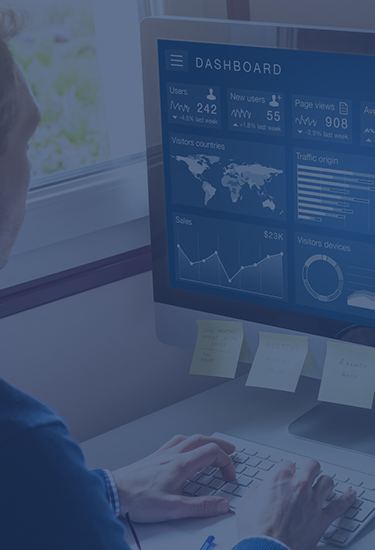The Tangentia EDI Gateway is a platform that seamlessly integrates with multiple business systems to enable small- and medium-sized businesses (SMBs) and large enterprises to attain full compliance with the EDI requirements of their trading partners, whether they are on the front end or the back end.
The Tangentia Gateway provides a range of state-of-the-art features, such as EDI connectivity to over 2,000 trading partners globally, full integration with eCommerce platforms and ERP/WMS/Carrier systems, support for multiple EDI standards, and support for multiple configurable user accounts.
However, automation can do so much more. It is vital to any business, large or small, to expand beyond their EDI to get the most out of automation. Tangentia makes this possible by providing an RPA platform to expand your order-to-cash and procure-to-pay systems.
Expanding the Order-to-Cash System
The current order-to-cash system involves the supplier organization sending the buying organization an invoice once they have received the purchase order. In this way, 20% of your EDI customers account for 60% to 80% of your transactions. But what about the other 80% of your customers that account for 20% to 40% of your transactions? These customers are small businesses that lie outside of your EDI and that means you are stuck manually processing their transactions.
This is where robotic process automation (RPA) comes in. RPA has the power to automate transactions with customers outside of your EDI. This includes transactions made via email, fax, PDF, and paper, making it possible for you to automate 100% of the transactions you have with your customers.
The benefits of automating order-to-cash are clear. They include:
- Onboarding smaller customers that do not have EDI capabilities
- Reducing back-office staff by as much as 90%
- Increasing the speed of payments
- Improving cashflow
- Reducing costs and increasing performance by as much as 83%
- Improving customer service
Expanding the Procure-to-Pay System
The procure-to-pay system from the side of the buying organization operates in a similar fashion. In this situation, it is still 20% of the EDI vendors accounting for 60% to 80% of the transactions, with smaller businesses operating manually via email, fax, PDF, and paper. Even vendors such as communications suppliers and cleaning companies send invoices manually.
Again, RPA can automate the procure-to-pay process, onboarding those vendors that do not operate via an EDI. Manual transactions can be processed through the RPA platform in a similar manner to order-to-cash transactions. The benefits of this include:
- Reducing invoicing costs of up to 80%
- Reducing invoice processing time from days to minutes
- Increasing data capture for improved decision making
- Improving procure-to-pay efficiency and vendor relationships
Which Bot Type is Right For Your Business?
RPA relies on software bots that are capable of accessing and pulling data from databases, forms, purchase orders, invoices, and other sources of data and information. For example, a bot can read through an invoice, access the required information, fill out forms when required, and will learn the first time it goes through this process. The next time the bot encounters a similar invoice, it will know precisely what to do.
Tangentia Intelligent Automation (TiA) is Tangentia’s bot platform. TiA bots are capable of performing tedious, repetitive tasks and processes that are not the best use of human time, and they do it faster and without human error. An example is the TiA bot that deals with purchase orders and invoices. This bot will:
- Open the purchase order attachment in the email
- Scan the purchase order
- Pull the required information from the purchase order
- Input the information into the proper fields of an Excel file
- Create and fill in all the details of the sales order
- Create and automatically send the invoice to the customer
One purchase order could take as long as 10 minutes to process when it is done manually. However, the bot can process four purchase orders in less than 30 seconds. This is a win, especially for time-sensitive purchase orders. It can take less than four hours from the receipt of a purchase order to dispatch.
Expand Your EDI Capability with RPA
The turmoil of today’s global environment, which is largely driven by the COVID-19 pandemic, has increased the need for automation. However, EDI is limited to partners who also have an EDI system. RPA can expand your automation capabilities to include partners who do not have EDI capabilities. In fact, close to 50% of businesses worldwide will increase RPA adoption simply due to COVID-19, with the following goals:
- Open the purchase order attachment in the email
- Increasing agility, resilience, and diversity in supply chain operations
- Dealing with increased cost pressures through the automation of back-office processes and operational tasks
- Supporting remote workforces
It’s time to start thinking about expanding your automation. If you are interested in learning more about what RPA can do for your order-to-cash and procure-to-pay systems, reach out and speak with a Tangentia team member today. We’re looking forward to hearing from you!
Expand Your B2B Automation Beyond EDI Using RPA. Watch our 45 min On-Demand webinar where you will learn how RPA & EDI can extend your automation capabilities.
Expand Your B2B Automation Beyond EDI Using RPA
Watch our 45 min On Demand webinar where you will learn how RPA & EDI can extend your automation capabilities

































